Special symbols
Technology involving patent rights held by Keio University. For further information, please inquire at the KLL Desk.
Research Project at Keio Innovation Foundry (KIF) as one of Keio University Faculty of Science and Technology 75th Anniversary Commemorative Project.
Materials
63 |
Materials Society & Environment |
 |
| Professor SHIRATORI, Seimei Department of Applied Physics and Physico-informatics |
||
|
Anti-icing/Anti-frosting films, micro reactor (droplets movement control), antibacterial film, and repellent film for hot fluidic foods will be exhibited.
|
||
64 |
Materials |
 |
| Professor SHIRATORI, Seimei Department of Applied Physics and Physico-informatics |
||
|
(1) Easy removal coating repels water for food or beverage and (2) Transparent coating slips oil for optical devices. This will reduce environmental problems and save energy. We promote the coating products to practical use.
|
||
65 |
Materials Biomedical |
 |
| Professor YAN, Jiwang Department of Mechanical Engineering |
||
|
We develop new technologies for nano-scale processing and surface property control of materials in order to improve the functional capability and added value of industrial products. We deal with super hard alloys, ceramics, semiconductors, glass, diamond, CFRP, and so on. Recently, we have succeeded in high-efficiency generation of nanoparticles and 3D nanostructures by laser irradiation on waste silicon sludge.
|
||
67 |
Materials Electronics Nondestructive inspection of internal anisotropy in polymeric materials by terahertz polarization spectroscopy
|
 |
| Associate Professor WATANABE, Shinichi Assistant Professor OKANO, Makoto Department of Physics |
||
|
Polymeric materials are usually opaque for visible light, but transparent for terahertz light. We demonstrate a polarization-sensitive terahertz spectroscopy which is very useful to investigate internal anisotropy inside polymeric materials.
|
||
68 |
Materials Information and Communication |
 |
| Professor YAN, Jiwang Department of Mechanical Engineering |
||
|
We develop new fabrication technologies for nano-precision free-form optics and their molds by using multi-axis numerical control ultraprecision machines. High-speed surface finishing of optical crystals, such as Si, Ge, ZnSe, CaF2, etc. has been realized by ductile machining technology. Recently, we also succeeded in fabricating ultra-thin Si-HDPE hybrid lenses for future IR devises.
|
||
69 |
Materials Other Fields Fabrication Method for Ultra-fine Nano-catalysts by
Gas-phase Intensive Nanocluster Source “Nanojima®” |
 |
| Assistant Professor TSUNOYAMA, Hironori Department of Chemistry |
||
|
Nanoclusters composed of several to several thousand atoms show remarkable, size-specific catalytic performance. We have developed a fabrication method for ultra-fine metal nanocatalysts by utilizing intensive, size-selected nano cluster source “Nanojima®” (Ayabo Corp.) and non-destructive immobilization (soft-landing) method.
|
||
70 |
Materials Other Fields Development of Ultra-narrow Microfluidic Mixer
for Chemical Synthesis of Fine Nanoclusters |
 |
| Professor NAKAJIMA, Atsushi Department of Chemistry |
||
|
Nanoclusters exhibit remarkable functions dependent on their size. Liquid-phase, chemical synthesis method enables us to obtain gram-scale nanocluster materials. However, it is difficult to control the cluster size precisely. We have developed a novel microfluidic reactor with ultra-narrow reaction channels (Toshiba Machine Co. Ltd.) for the fine synthesis of nanoclusters.
|
||
73 |
Materials |
 |
| Professor KOMOTORI, Jun Department of Mechanical Engineering |
||
|
Metallic materials, such as carbon steel, stainless steel and titanium alloys, are required to have certain desirable properties for practical applications. The aim of our laboratory is to develop a new surface modification processes.
|
||
74 |
Materials Biomedical Development of biomaterials
using Diamond-Like Carbon coating |
 |
| Professor SUZUKI, Tetsuya Department of Mechanical Engineering |
||
|
The biocompatible materials have become more important with the development of medical technology. Surface modification receives much attention as one method of improving various properties of biomaterials. We have developed new biomaterials using Diamond-Like Carbon (DLC) coating. We will introduce about our approaches to the biomedical application development.
|
||
75 |
Materials Electronics Lower-cost and higher-durability solar cell
using Diamond-Like Carbon film |
 |
| Professor SUZUKI, Tetsuya Department of Mechanical Engineering |
||
|
To popularize solar cells, it is necessary to reduce the manufacturing cost of them. Solar cells using Diamond-Like Carbon (DLC) film meet this demand. Moreover, they possess great properties, which enable them to withstand various environmental conditions. We introduce our research on DLC solar cells to solve energy problems.
|
||


